My new album is out! I’m very excited to share “A History,” an album I’ve been working on for the past three years but in reality has taken most of my creative life to realize (isn’t that true about any creative project?). I keep a daily journal, and going through some older entries, I found some inspirations about the album’s soundscape that I’d totally forgotten about. I thought it’d be fun to dive into the songs’ fitful births.
First, some backstory. Post-college, I was in a garage/punk/psychedelic outfit called the Mole People. After the band split in 2014, I tried solo recording, but years of trial and error and frustration led to abandonment. Music-making kind of fell by the wayside until 2018 or so, when I established a daily practice of recording and writing. In retrospect, this was all experimentation and learning, but deep in it, I felt completely lost. I was utterly angry that I couldn’t make something perfect, original, and true. The onset of the pandemic only heightened this pain, but sometime in the winter of 2020, I noticed I’d already started amassing similar-sounding songs. These were drifting blooms of sound collage, no vocals, just focused on texture and the amorphous, untethered feeling of the pandemic isolation. I released these as Drift in 2021 and felt a big weight off. I found something of a voice, some little niche to explore.
But after Drift came out, this ambient sound didn’t really appeal anymore. I wanted noise, hooks, volume, and excitement. A positive, energizing sound. Songs started pouring out, merging with the Drift-like textures and a comfort in my singing voice which I hadn’t felt in years. Still, it took years of tinkering and iteration to get it right. I had to accept that although I’m diligent, I work slowly, and this process does eventually lead to some interesting places.
All of the songs were largely written on my Ibanez Artcore hollow body guitar, which sounds bright and muscular when it’s unplugged (I actually prefer it unplugged). Most of the songs were recorded on my Danelectro, run through all sorts of pedals and sound-degradation techniques. I wanted these songs to sound rough but modern, like 21st century garage rock. I recorded them all via a cheap Tascam USB interface into GarageBand. It’s funny to me that GarageBand is considered so “unprofessional,” when it’s merely a simplified version of Apple’s Logic. I love its simplicity; I use it like an old cassette four track, just plugging in and playing. But unlike a four track, I can move things around, edit sounds, manipulate, and layer. Analog ease with digital experimentation.
The album was mixed by myself—that’s always been one of my favorite parts of the process. I mixed some songs four or five different times, each resulting in a completely different song.
at Altered Ear mastered it, just like with Drift, bringing out the textures and balancing the sound colors song-to-song. He has such a nuanced ear and is a real delight to work with. I highly recommend his own music, which is patient, engrossing, and deeply engaging.The album art was my own creation, too. Over the past year, I’ve been really into making my own linocut stamps. I’ve carved a few different alphabets, but my favorites are the scraps and abstracted designs that often litter my work desk. I’ll make a stamped “collage” from these and they tend to look much better than whatever I’ve been painstakingly designing on my canvas. Where my music is slow to gel, these stampings are fast, done in fifteen minutes.
The images are manipulated, blasted-out photos from the Library of Congress, mostly 1930s Works Progress Administration documentation. I love the texture of these old black-and-white images, capturing the labor of ordinary Americans, the stark design of WPA structures. Then I organized it all into a zine, printed on construction paper. It’s available as a pdf via the Bandcamp download. I like the ease of digital downloads, but hate that they often don’t come with lyrics or art or any sort of tangible thing, so this went some way to giving the listener something to flip through and engage with as they listen.
1. “An invocation”
I wrote and recorded a version of this song in 2018-2019, and I didn’t like it: overwrought, underbaked. Back to the drawing board.
[original “An invocation,” 2019]
The fuzz guitar runs rampant through the rest of ‘A History,’ so I brought it in to this final version. Layers of fuzz, like lacquer, propelling the song through a certain cloudy motion. The high loop at the beginning and end (and throughout) is an experiment with string bending, captured on my iPhone placed a few feet from a practice amp.
[“invocation” drone being made in real-time, 2022]
Completely unrelated to this song, it mysteriously was in the same key and fit like a glove when I dropped it in. “An invocation” is a beginning, a rendering of the hidden humor at the core of Zen Buddhism: there is no escape from here. Isn’t that the greatest news?
2. “Beyond belief”
A song I wrote deep in the first pandemic summer, aching for an escape. A place beyond belief: maybe imaginary, maybe beyond our individual beliefs, bigger than mere belief. The first song that whispered the new direction for Vinespeed, post ambience. Flying Nun strumminess and jangle with Wire’s songwriting philosophy: when the words run out, the song’s over.
3. “A body”
According to the technocracy, every body is literally a problem they are trying to “solve.” To “transcend,” they build amoral technology meant to eradicate humanity’s pesky humanness. They denigrate their own bodies as “meat suits.” We all know this is bad and will end even worse, so why do we pretend it’s inevitable?
This song requires the full body to play, big clanging chords. I tried four or five different iterations, fumbling with the lead guitar and the atmosphere. I wanted it big, body-ful, but slightly chaotic. Spent much of last fall listening to Boards of Canada and finding old interviews with the duo about their technique: synthesizers run through old tape machines, the sound of an archaic futurism.
Rediscovered a tape loop I’d made a few years ago, pitched it to the key of “A body,” and “played” it like a lead guitar. A machine bent a human way.
4. “The heat”
The summer of 2023 in Austin was a backbreaker, oven-hot for months. I learned what a “heat dome” was, why it was settling over Texas, and what it does to you physically. This song started jokingly, like a pastiche of “Heat Wave” by Martha and the Vandellas. But then the heat got scary, terminal, as if the winter had evaporated and was never coming back. So this song took a darker turn, stealing the outro lyrics (August is forgetting you) from another unfinished song of mine.
The heat in Austin is pummeling, so I (mostly) stuck to one pummeling chord for the entire song. I was listening to a lot of shoegaze at the time, but I didn’t want to replicate Kevin Shields’ exact tremolo bar effect; so many bands are doing that these days without offering anything new. Listening to George Harrison, I connected that sound to slide guitar, that original “melting-sound” sound. I layered slide guitar (acoustic and electric) to create a hazy drone. Shoegaze where your shoes are melting.
5. “cicadas”
My love of drone music probably comes from being bathed in cicada sounds every summer for thirty-seven years. It’s a soothing sound, slowing you down in the heat of the day. Maybe something wistful to it too: the soundtrack to childhood summertime roaming.
There are different cicada drones throughout Texas, and this song includes ones from Dallas, Austin, and San Antonio, neotibicen latifasciatus and neotibicen superbus. They appear courtesy of Mexican sycamores, live oaks, and sweet gums at dusk. Tremolo and fuzz guitars play in the cicada band.
6. “Henbit dead nettle”
Henbit dead nettle is a “weed,” but I disagree. It’s one of the first flowering plants in Texas winter, allowing pollinators some needed food before spring. It’s beautiful too, with Seussian architecture to it. I like that it punches through sidewalk cracks, explodes in empty lots, recaptures yards. Spring’s early herald.
In Dallas, I’m on my old block, looking up and down the street and seeing house after house with perfectly square lawns of St. Augustine grass. It’s beyond absurd: the grass grows, you cut it, grass grows, you cut it, over and over and over. These prisons we create for ourselves.
I heard a Broadcast song at a coffee shop and borrowing its feel and key, wrote a sketch of this in about ten minutes. Built the final song from loops, writing via mixing and editing. Really felt more like gardening than songwriting.
7. “loopfield”
A lot of my favorite ideas come from recording prompts I give myself. I don’t remember exactly what I was doing here, but I think I was figuring out ways to loop drum machine hits on a loop pedal and play with the pitch of the beats by quickly changing the delayed time. A science experiment that broke out of the lab.
8. “Automaton #5”
The chords to the Cure’s “Just Like Heaven,” played backwards. Placeholder lyrics that I left in place. Hiding emotions, and not knowing why—just an automaton going through its rhythms. Machinelike, even when we don’t want to be. The fifth recorded iteration of the song, finally balancing the jangle with reversed slide guitar.
9. “smear”
Two recording prompts layered together: blown out breakbeats, an ode to Boards of Canada, with smeared fuzz guitars, an ode to Mark Rothko and the color field painters.
10. “Hammer away”
There are two folk songs that beat at the heart of American labor history: Carolina Tar Heels’ “Peg And Awl” and the many versions of the “John Henry” ballad. The former summarized by Harry Smith in The Anthology Of American Folk Music, “Technological unemployment hits shoe industry in the year of 18 and 4.” The latter, a quasi-mythical black hero who beat a machine in a mountain digging contest.
We face the same machines, over and over. Machines meant to dehumanize us. Machines in the service of money above all other considerations. The machines we internalize, which mechanize our realities. History keeps looping.
A hammer can be destructive and constructive. A hammering drum beat, to wake the weight, the sleep of avoiding just to carry on, day to day. Hammered two songs together to make one. What can we build?
11. “Well, well”
The drone comes full circle. I built this from barre chords shifted half steps around the fretboard. Simple patterns and constraints that revealed new complexities. The words were a sound poem; alliteration gave way to deeper layers. Yearning for connections deeper than platitudes and small talk. Yearning for languages beyond speaking. So I set out to find that in the outro, looping my way towards some sort of transcendence.
Thank you for listening and reading.




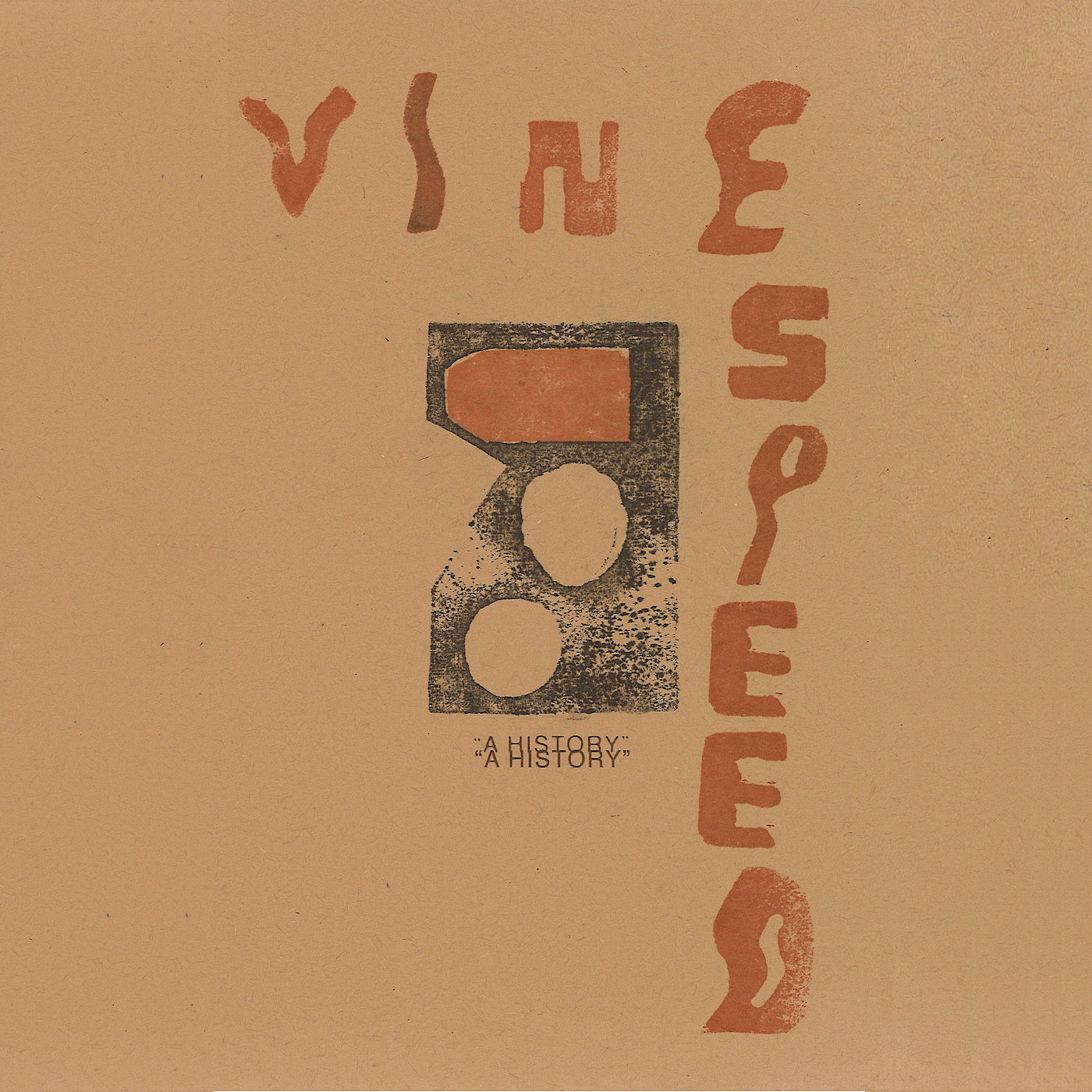
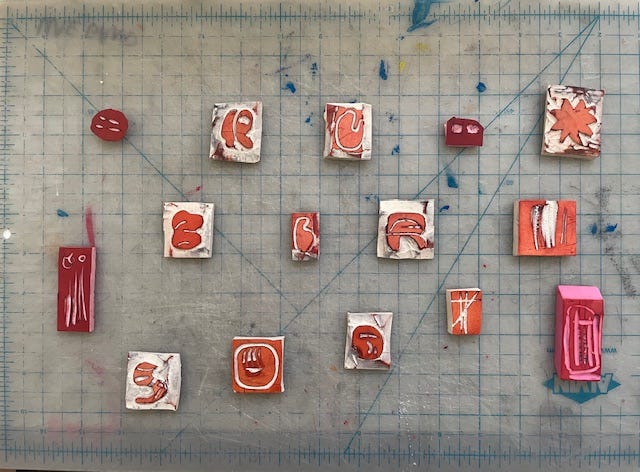
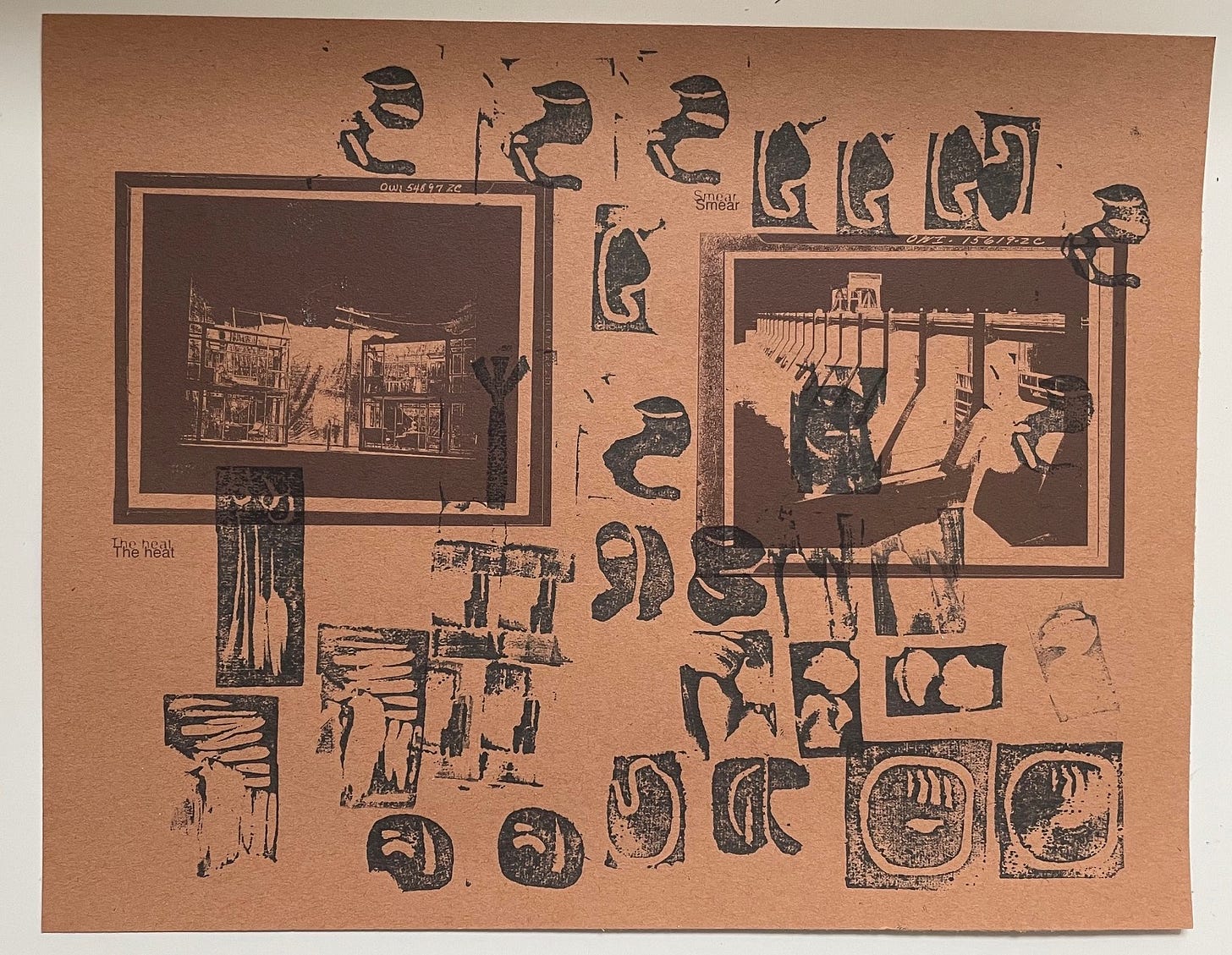
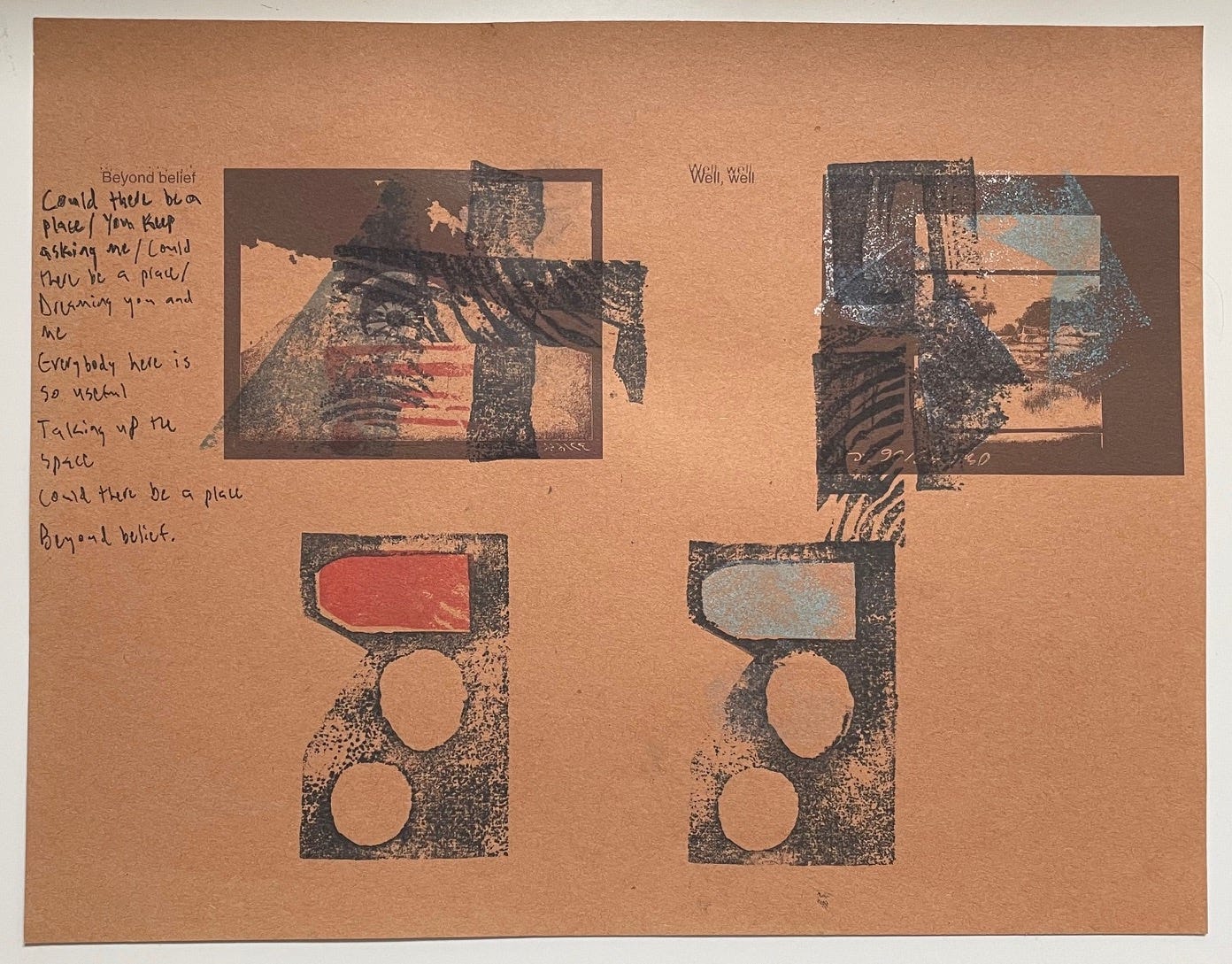
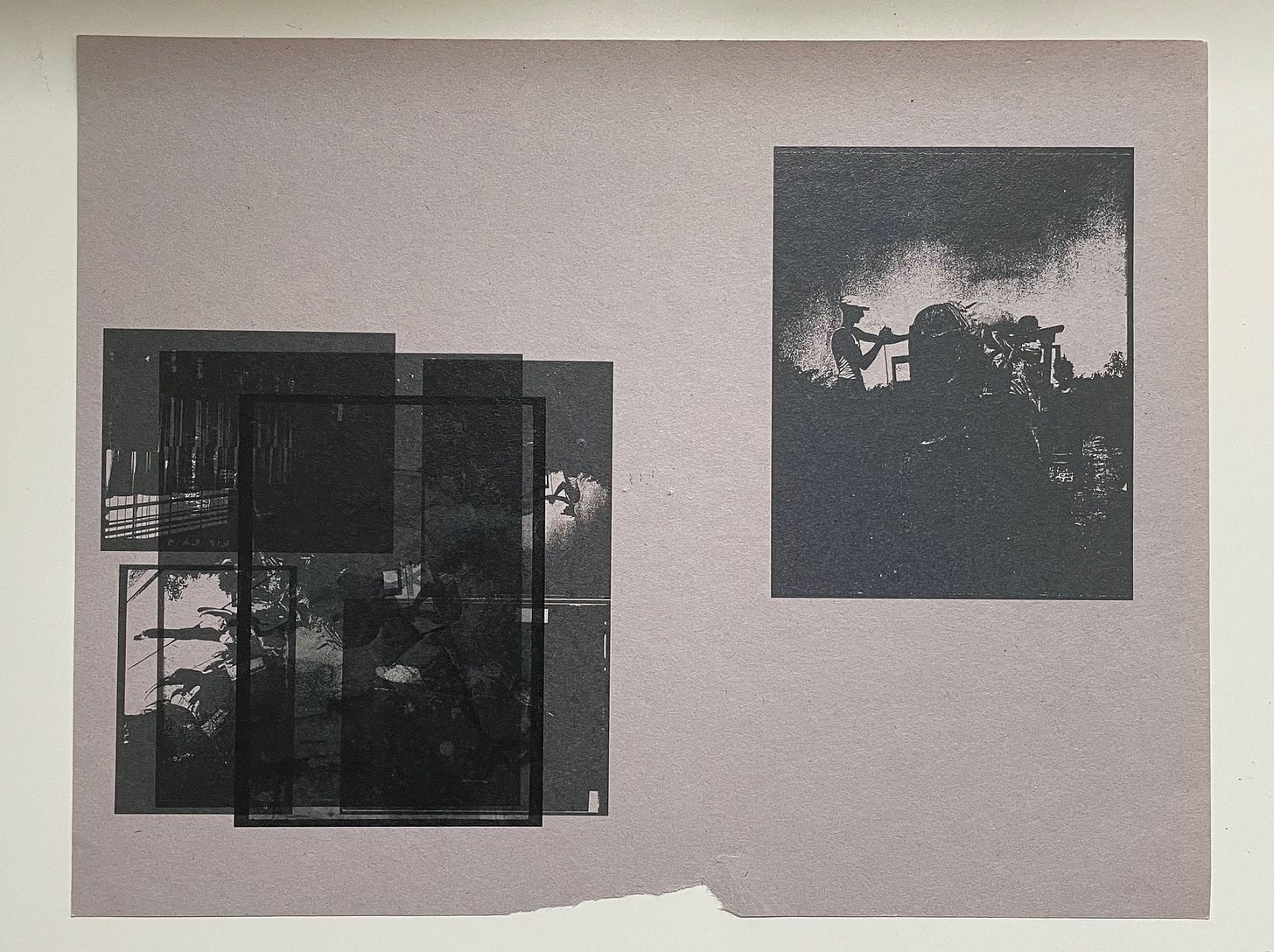
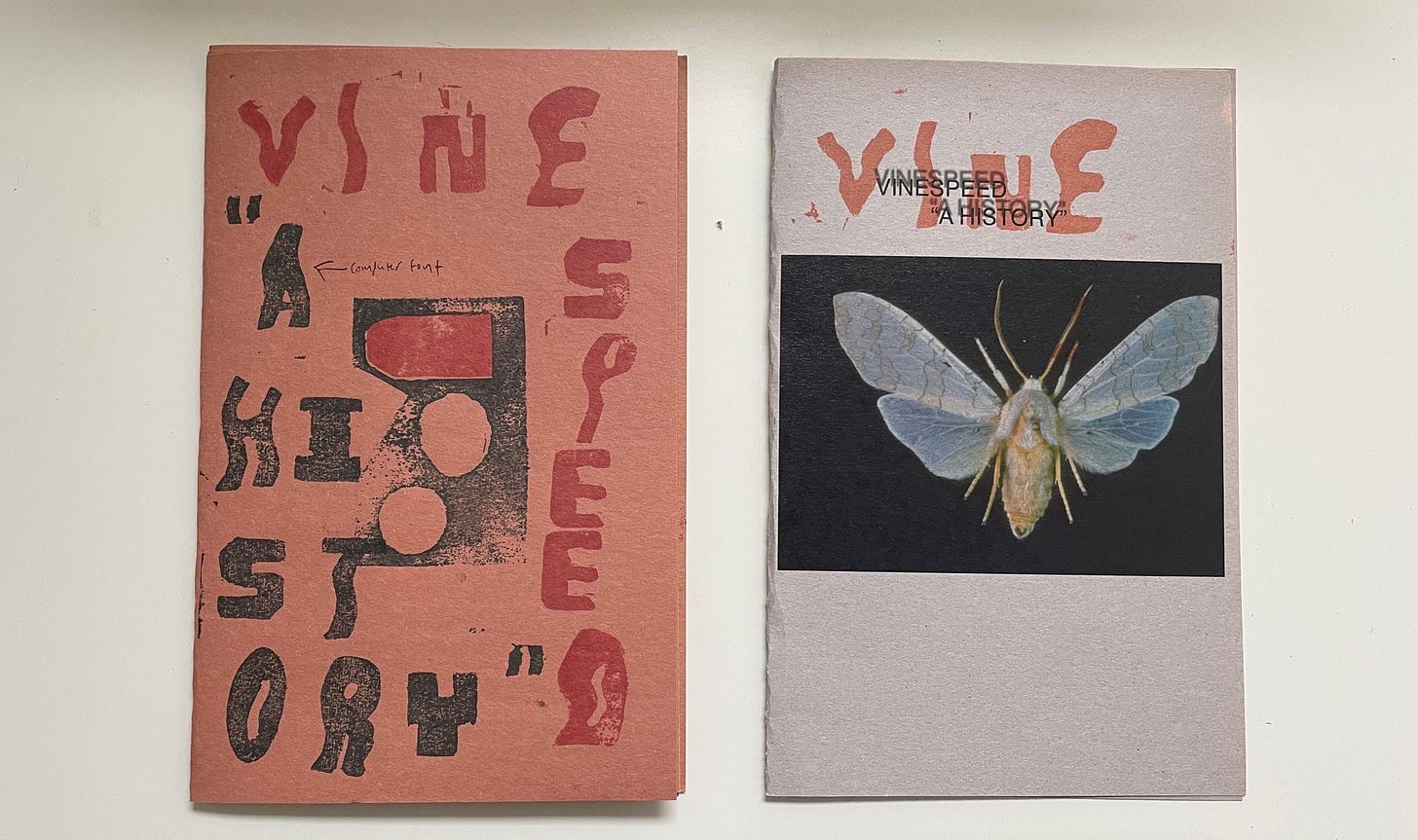


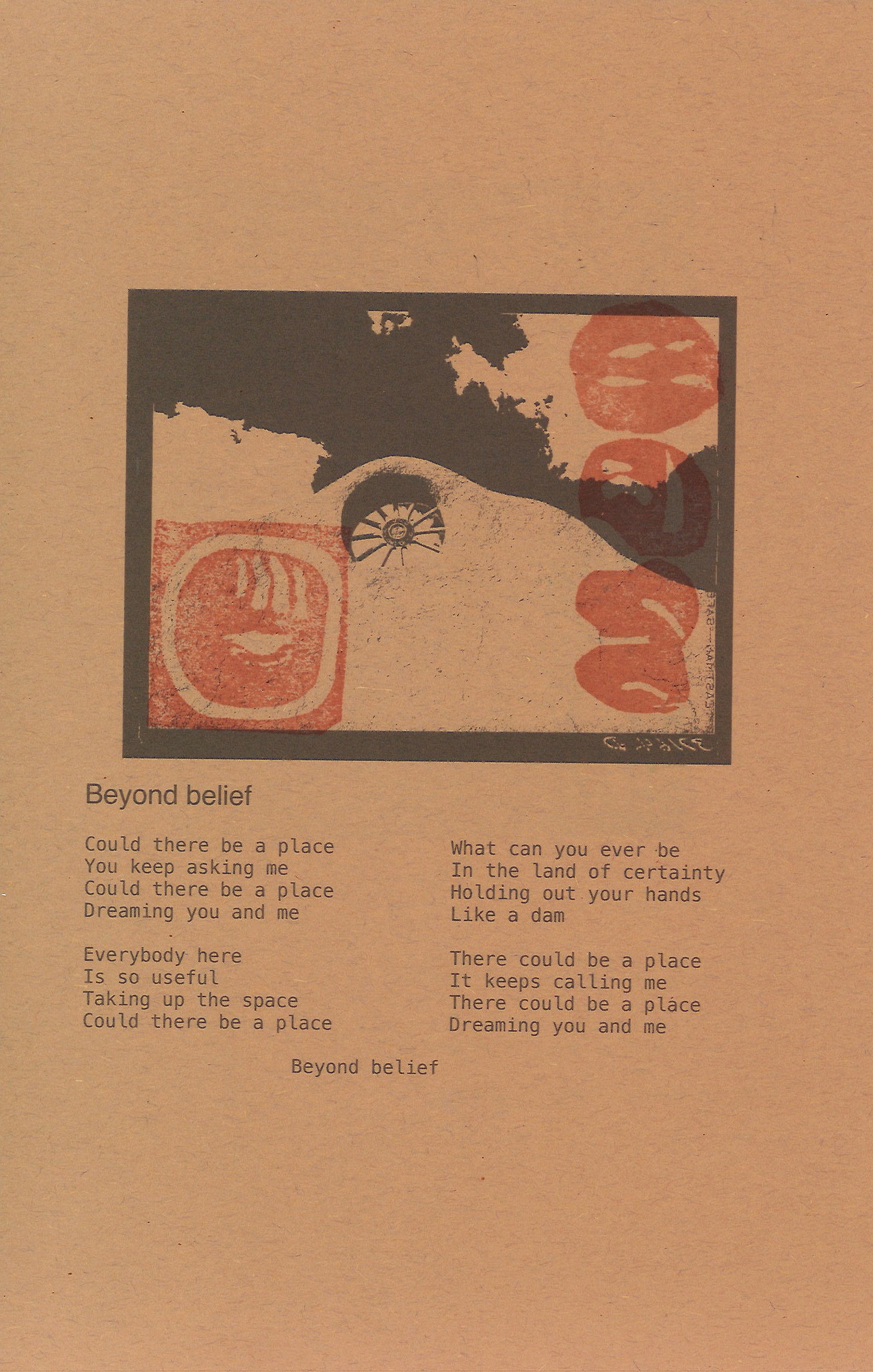
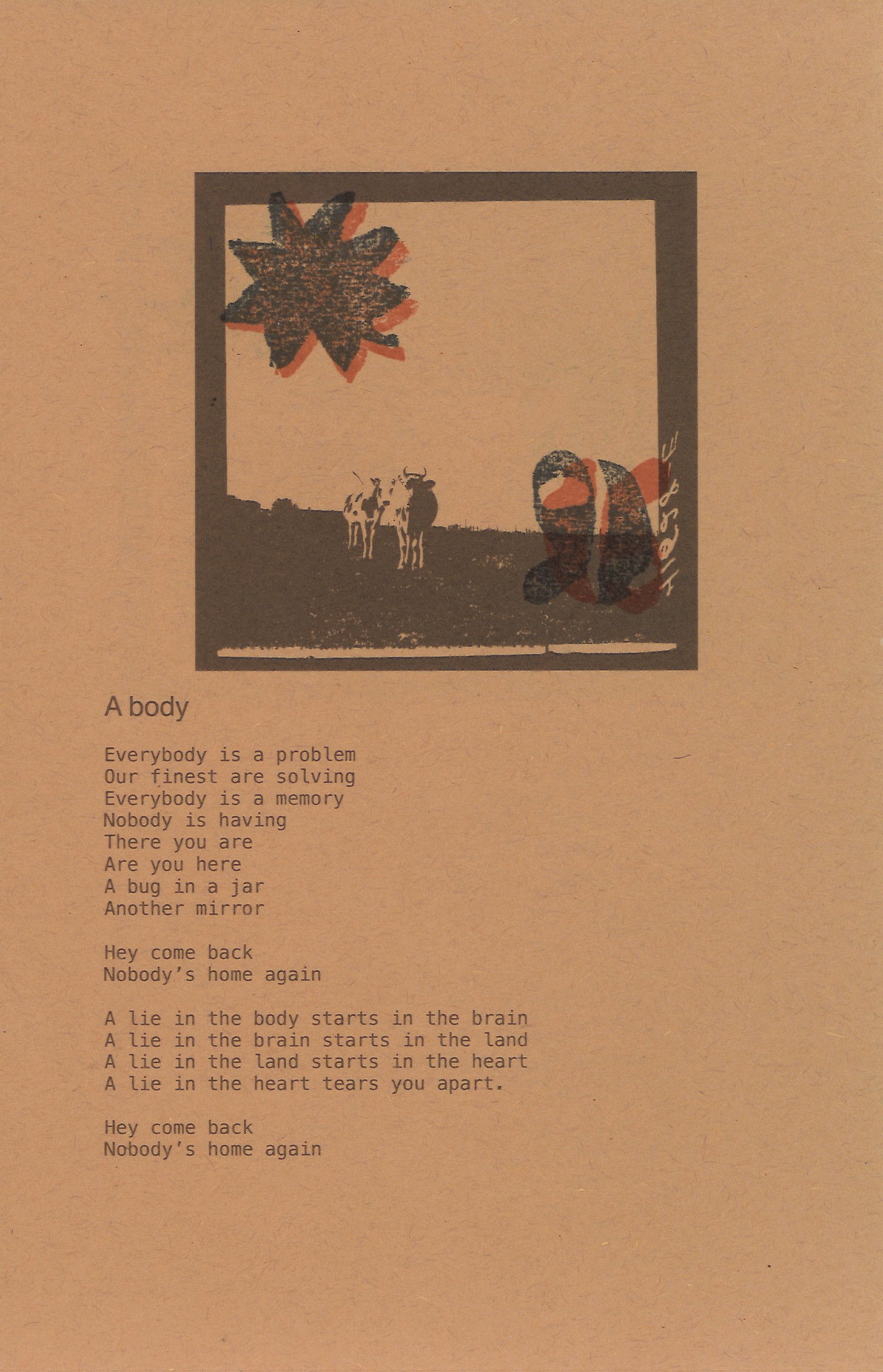
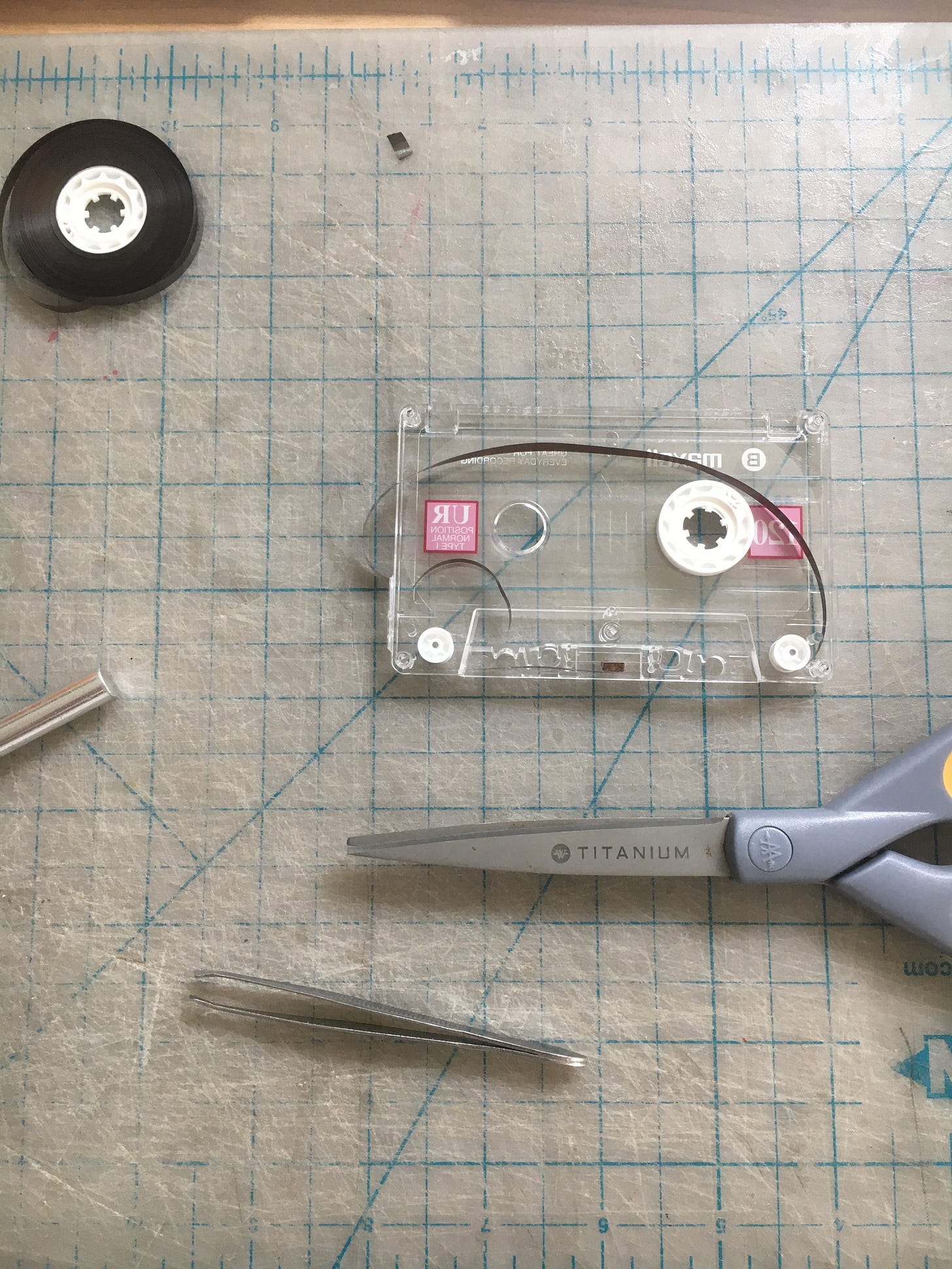

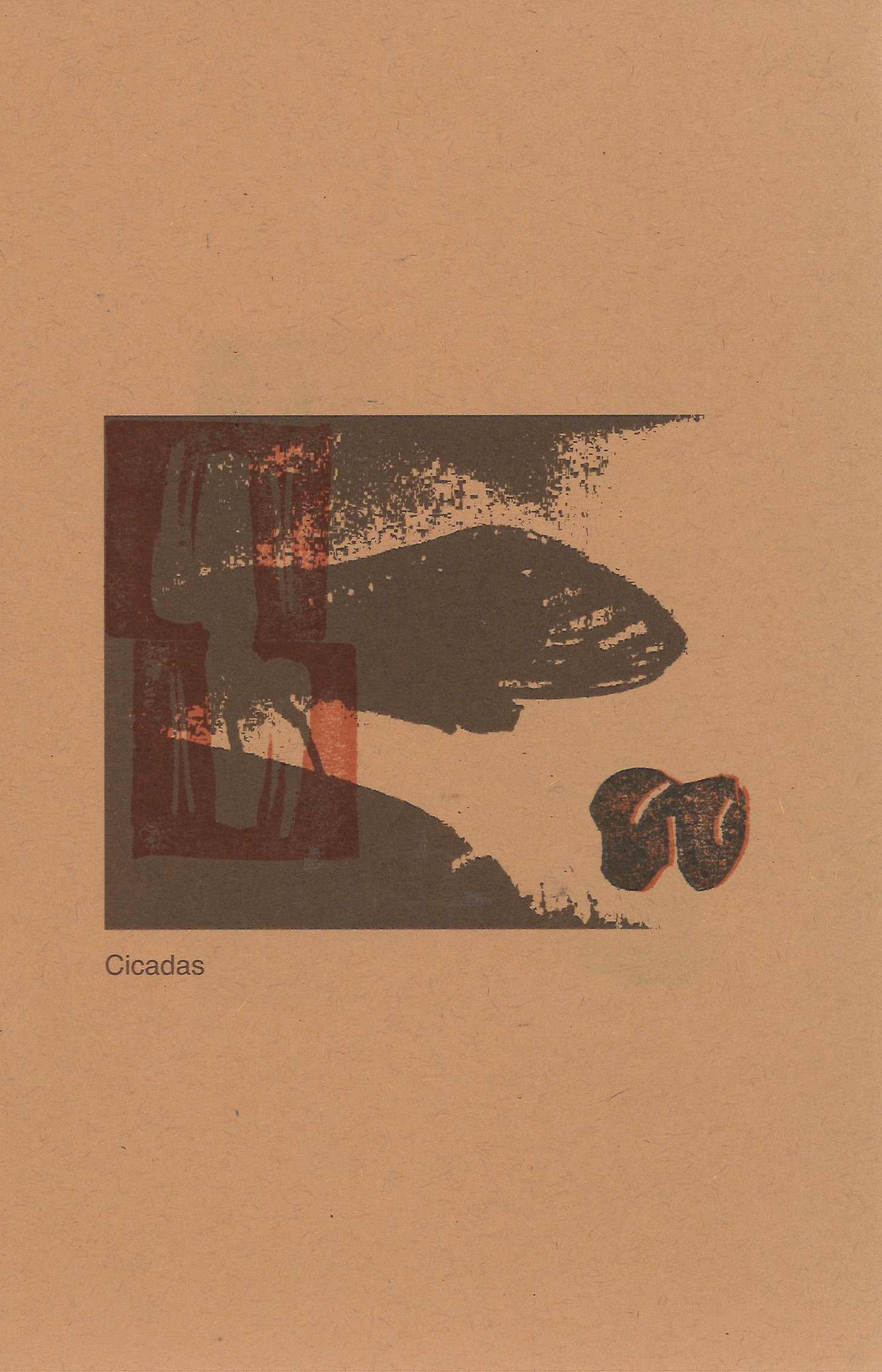



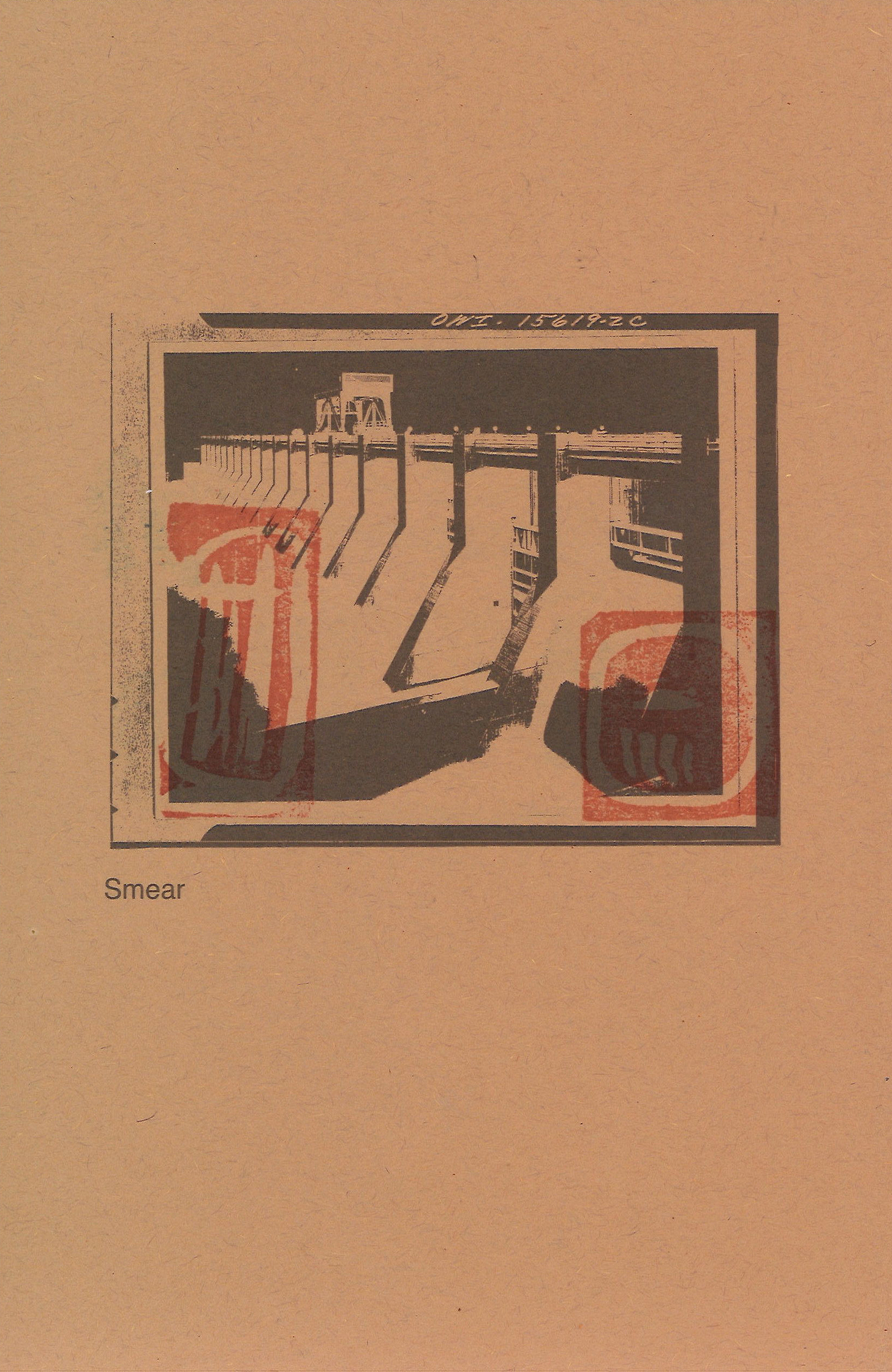
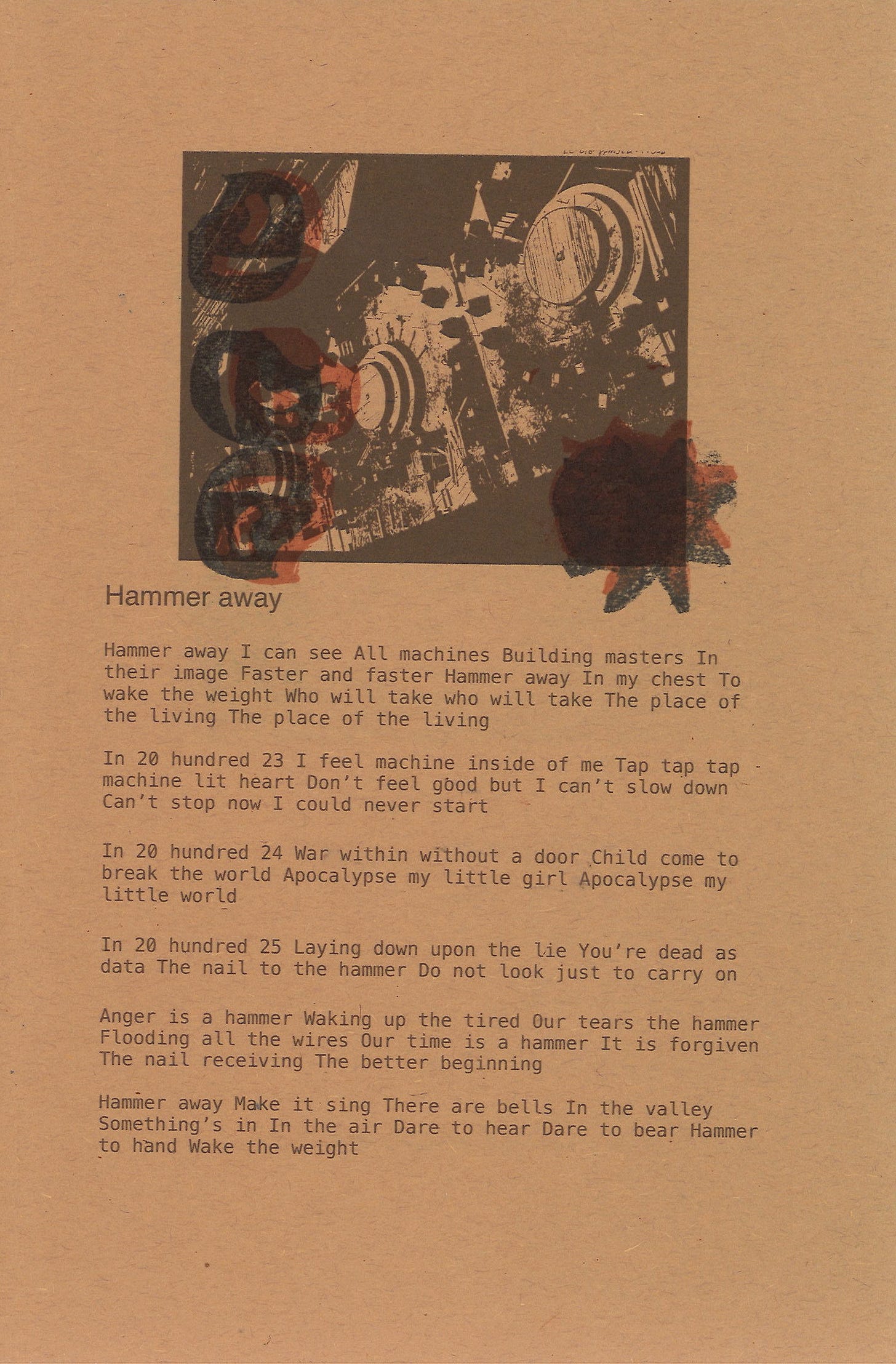


Found you via Austin Kleon’s newsletter and loved this entry! Nice tunes and makes me feel les guilty for doing my musical experiments in GarageBand. Great artworks too
Very cool, brings back memories of some of the 4-track Canadian indie rock stuff I used to listen to in the 90s.... Hayden, Sianspheric, Eric's Trip, Rusty et al.